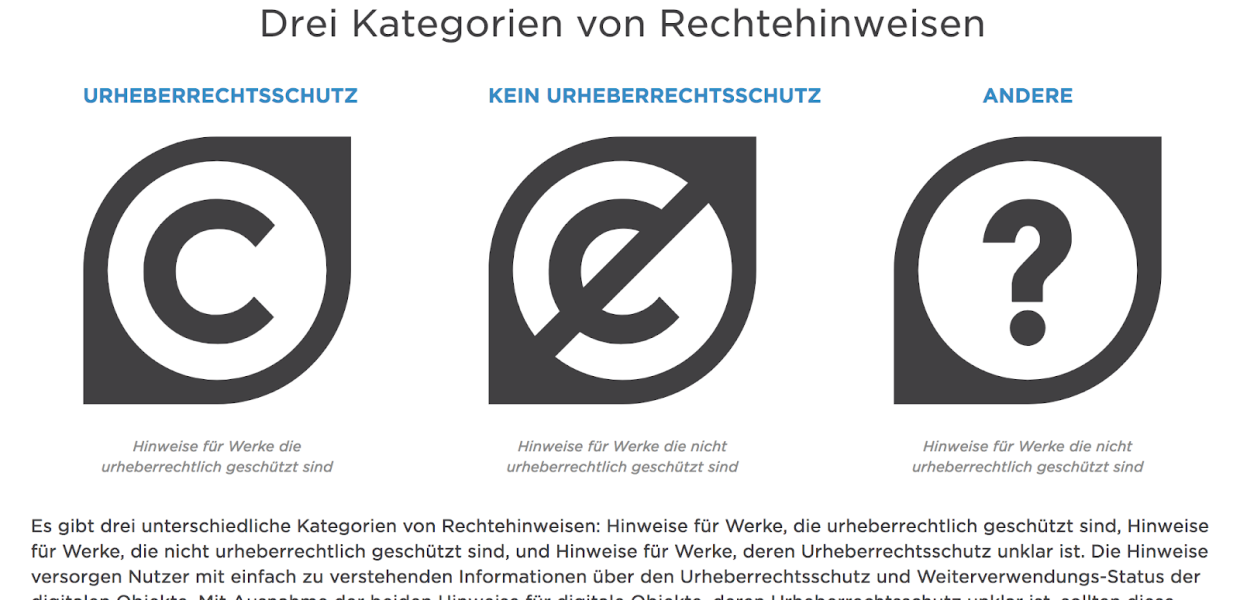Multilingual rights statements - now available in German and Estonian
RightsStatements.org provides 12 rights statements that can be used to describe digital cultural heritage items and all of them have now been translated into German and Estonian
We’re happy to tell you about the launch of German and Estonian language rights statements provided by the RightsStatements.org Consortium. The German translation was undertaken by Europeana Network Association Members Councillor Ellen Euller and Ilja Braun. And the Estonian translation by Europeana Network Association Member Vahur Pruik and Tanel Pern.
The Consortium publishes 12 statements, developed originally in English. All of these have been translated into German and Estonian. They are the first of a series of translations that are underway. Europeana currently uses six of these statements. You can see the full list by consulting the list of available rights statements.
The translated statements will display automatically based on the browser's language settings of the. The DDB will be among the first German cultural heritage institutions to use them, and plans are underway with Estonian organisation Ajapaik.
Don't want to change your browser settings? Check out the German and Estonian language version.
What’s the benefit of providing multilingual rights statements?
Up to now, anyone wanting to find out more about the copyright status and reuse possibilities would only be able to read these in English. Now, if you have your browser settings set to German or Estonian - no matter where you are in the world - you will view the statements in German or Estonian respectively.
What do cultural heritage institutions need to do?
If you provide data to Europeana and already use rights statements provided by the Consortium, then you don’t need to do anything. The urls you submit for publication remain the same as those published in the list of available rights statements.
A bit about the process
The Consortium published a translations policy in 2017 to enable a transparent and consistent approach is taken in publishing translations of the statements. The German translation was the first to be processed under this policy.
Thanks to Ellen’s and Ilja’s experience with translations, and Ellen’s familiarity with copyright law and the issues caused by digitisation of cultural heritage objects, this first run through of the process also highlighted some instances in which the statements needed to be refined in order to be consistent with each other. As part of this work, Ellen has joined the Consortium's Statements Working Group and will continue to offer her expertise in this area.
We’re not finished yet! There are still more translations being developed. Check out the translations page of the Consortium website for the most up-to-date status, as well as information about how to make an application to develop a translation in your native language.
If you are interested in providing a translation for the RightsStatements.org Consortium - you can also get in touch via info@rightsstatements.org.


